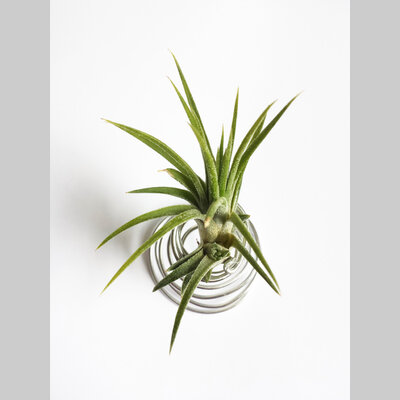tillandsia cultivation, pt. 2: experiment conclusions
2019/08/19
It's three weeks later, and the experiment has concluded. To recap: I want to figure out what watering strategy works best for my new plants.
You can take a look at the raw data and the gently cleaned data.
tl;dr the final strategy (heavy daily misting) worked best, and is what I'll stick with.
This graph depicts total plant mass over time, and neatly summarizes the conclusions. Please excuse the lack of labels.
the weeks
- It pained me to watch the weights go down every day and do nothing. This is mostly interesting to compare the species, as we get a rough ranking of how well they retain water. Unsurprisingly, the only plants that tolerated this were the Xerographica, Seleriana, and Tectorum, which have the heaviest trichrome coverage.
- I misted the plants lightly every day. Clearly better than water once a week, but about half the plants didn't gain weight.
- I misted heavily every day. All plants except the Seleriana gained weight.
caveats, challenges, outliers
- the Xerographica got less light due to how I placed it
- the Seleriana fluctuated wildly, possibly because it traps water
- I ran out of the water I was using on the last day of week 3, so some plants didn't get much that day
- the Hammeri clump was very hard to keep hydrated: the thin leaves don't much retain water, and also don't pick up much via misting
conclusion
I had an agenda: I would rather mist every day than soak once a week. After testing these strategies, I think it's safe to say that daily misting is, if not optimal, than at least good enough to sustain growth.
If we assume that all weight gain during the third week was growth, the aggregate relative growth rate (RGR) was about 1.99 mg/g/day. This is, from what I can tell, on the low end, but not unreasonable (and it varies by species, of course). The only published Tillandsia RGRs I could find were Juncea with 2, and Flexuosa with 1.4-ish in high exposure situations, or 3.6-ish in ideal trees [2, 3]. As an aside, some plants can have an RGR of 300 or more [3].
I noticed that the following are all growing offsets (or "pups") and roots: Tectorum (2 pups), Ionantha clump (6 pups), Ionantha "druid" (1 pup), and Hammeri clump (1 pup). The Seleriana is also growing a root. The pups are evidence that the plant either thinks it's going to die and should make a backup, has just bloomed and is preparing to die, or is in a good situation and is ready to propagate. The roots are better evidence of health, since they grow quickly and signify a plant that is happy with its location.
The final meta-conclusion is that weighing plants is an easy and effective way to determine if their water needs are being met. I'm very happy with the process and results.
references
[1] Benzing, David. Vascular epiphytes: general biology and related biota. Cambridge University Press, 1990.
[2] Zotz, Gerhard. Plants on Plants: The Biology of Vascular Epiphytes. Springer, 2016.
[3] Zotz, Gerhard, and Stefan Wester. Growth and survival of Tillandsia flexuosa on electrical cables in Panama. Journal of Tropical Ecology, 2010.


